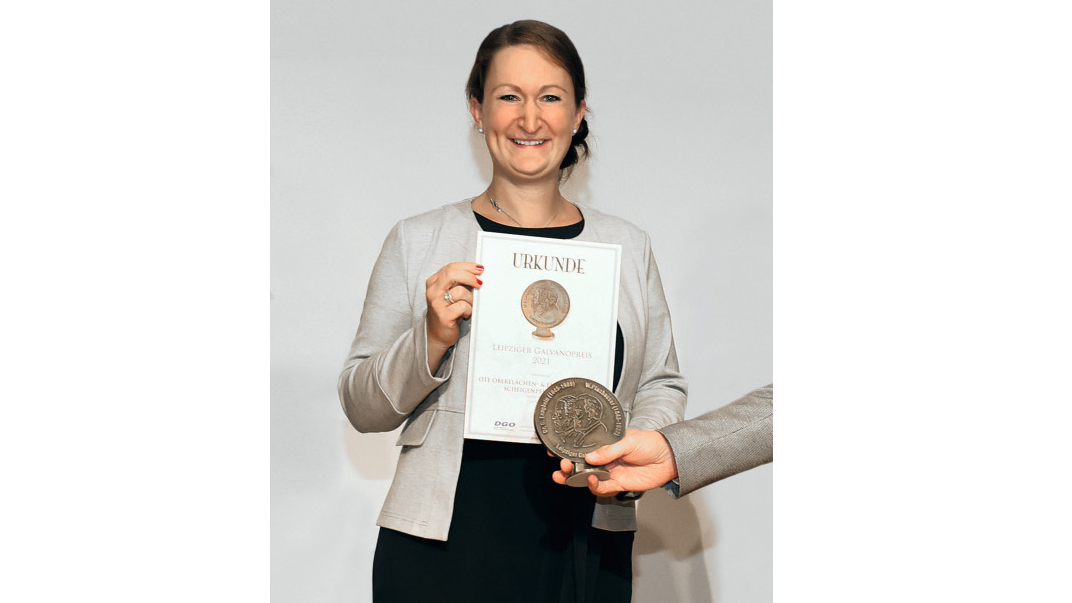Galvano Prize winner 2022 and authorized signatory at Oberflächen- & Elektrotechnik Scheigenpflug GmbH Leipzig, Ms. Claudia Wagner, Interview: Robert Piterek
Ms. Wagner, please briefly explain what your company received the Leipzig Electroplating Award for this year?
We received the prize for our robot-supported system technology for expanding the possibilities in electroplating technology. The aim is to re-evaluate, develop and observe electrolytes without human influence solely under the conditions of the robot. This also makes it possible to recognize which influencing factors bring about individual changes.
Your company specializes in plant engineering for electroplating and surface technology. But you were not the only winner. Who are the other winners?
Prof. Dr. Thomas Lampke from the Chair of Materials and Surface Technology at Chemnitz University of Technology was the scientific director. The robotics partner is KleRo GmbH Roboterautomation from Berlin.
What was your role in the project?
We were responsible for the engineering and had to fit everything that was needed into a small space in the robot's action circle. The system is rectangular, but the robot moves in a circle. For example, the robot's gripper arm is only capable of certain movements at certain angles. The bath had to be particularly small to conserve resources and also contain everything that a large bath contains: Heating, temperature sensor, fabric movement, dry-run protection, pH measurement, etc. Nothing could be solved as usual. Special solutions from our company were required for everything.
"No standard solutions were considered for the project"
What were your research intentions for the robot-assisted system?
The main focus is on conserving resources and the replicability of the tests. That's why it was important to eliminate the human factor, because a human moves differently every time. The robot, on the other hand, always moves in the same way, at the same speed and with the same sequence of movements. If a value is now changed, e.g. the pH value or the temperature, the influence can be precisely determined.
You said that your robot-supported bath is smaller than a regular galvanic bath. How big is it?
The bath only holds 0.5 liters, but it is suitable for all electrolytes that are available and that can be test-coated using a Hull cell. It is purely a test facility. However, it is also possible to build such a system on a larger scale. We will see in which direction this develops.
Could there also be potential uses in industrial production?
We already have automated machines in manufacturing. Robots have the advantage that they can move around in a small area. We don't have to connect them in series, instead they can move in a circle and the system can be positioned around the robot. In comparison, robots are much more flexible than automatic machines.
What potential applications do you see for your award-winning technology?
Of course, I would like to see robot-assisted technology used more and more in electroplating shops. I see possibilities for its use as a test system or in pilot plants. If a greater demand should develop, it is of course our ambition to be involved in these projects.
ABOUT THE PERSON
Claudia Wagner
accepted the Galvano Prize 2022 in Leipzig on behalf of her company. Chemnitz University of Technology and KleRo GmbH Roboterautomation also received awards. Leipzig-based Oberflächen- & Elektrotechnik Scheigenpflug GmbH was founded in
founded in 1998 and specializes in the construction and conversion of electroplating and surface technology systems.


